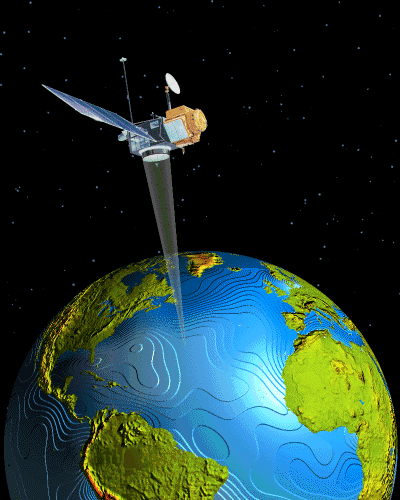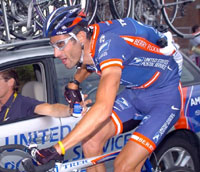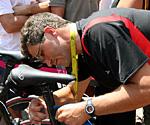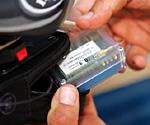


Telemetry in its basics is a way to upload and download information and in this case from a single rider to his or her training team to analyze the performance of the rider.


In this year's Tour de France, TV and website race followers got an unprecedented level of access to the intimate details of some riders' physiologies as teams used GPRS telemetry to reveal riders' heart rate and power output to the world.
Cycling teams have now started to use telemetry, just like the F1 cars (or rather, as F1 cars did until FIA banned telemetry last year). But that's about where the parallels end. Where the telemetry systems in F1 allowed engineers to actively alter the car's set-up throughout the race, the use of telemetry in the Tour de France is not being used - yet - in any tactical way
Telemetry – SRM
data live on TV and the internet
From 2005 onwards,
SRM will provide the telemetric
data which can be seen live on the internet. The professionals from various top
teams taking part in the tour will reveal just how much power they put into it:
power (watts), heart rate (beats per minute), cadence (rpm) and speed (km/h)
will all be shown.
 Watch how your favorite cyclist “is doing” in comparison to
the other riders.
Watch how your favorite cyclist “is doing” in comparison to
the other riders.
The SRM Training System saves and shows the following values on the Powermeter display:
Speed Riding time Riding distance
Temperature Energy consumption
SRM – much more than just a bicycle computer
The
SRM System looks
like an ordinary bicycle computer but it can do much, much more. It not only
shows standard values such as speed, distance, cadence and heart rate, it also
records the wattage the rider exerts on the pedals. Schoberer developed a
special crank that could determine the wattage.
 This feat of power measurement
was achieved with the aid of small strain gauge strips mounted between the inner
and outer rings in the crank. Power is transmitted from the pedal to the chain
and rear wheel and thus to the road via the inner ring.
This feat of power measurement
was achieved with the aid of small strain gauge strips mounted between the inner
and outer rings in the crank. Power is transmitted from the pedal to the chain
and rear wheel and thus to the road via the inner ring.
The more powerful the
force on the pedal, the more the strips deflect and the more the electrical
resistance measurement changes. The little computer on the handlebars calculates
the power in watts from the torque and the cadence. The most important detail of
this invention: no energy is lost through the measurement. This is exactly what
makes the system so important for professionals because, of course, they can
tolerate no loss of energy while performing.



Working from left to right, Team Director Johan Bruyneel is in the driver's seat and has a ready supply of Powerbar product in his door. In the centre console there is a TV attached to the top of the dashboard, then a GPS navigation system in the main console. The team radio hangs from the rearview mirror, plus Johan will have at least one cell phone and a blackberry with him as well.


In the back the mechanic takes his place. The wheels are stacked for easy access, the tools and maps all in their proper place as well. And the one important item you cannot forget is the small blue cooler on the floor - it has their lunch in it!

